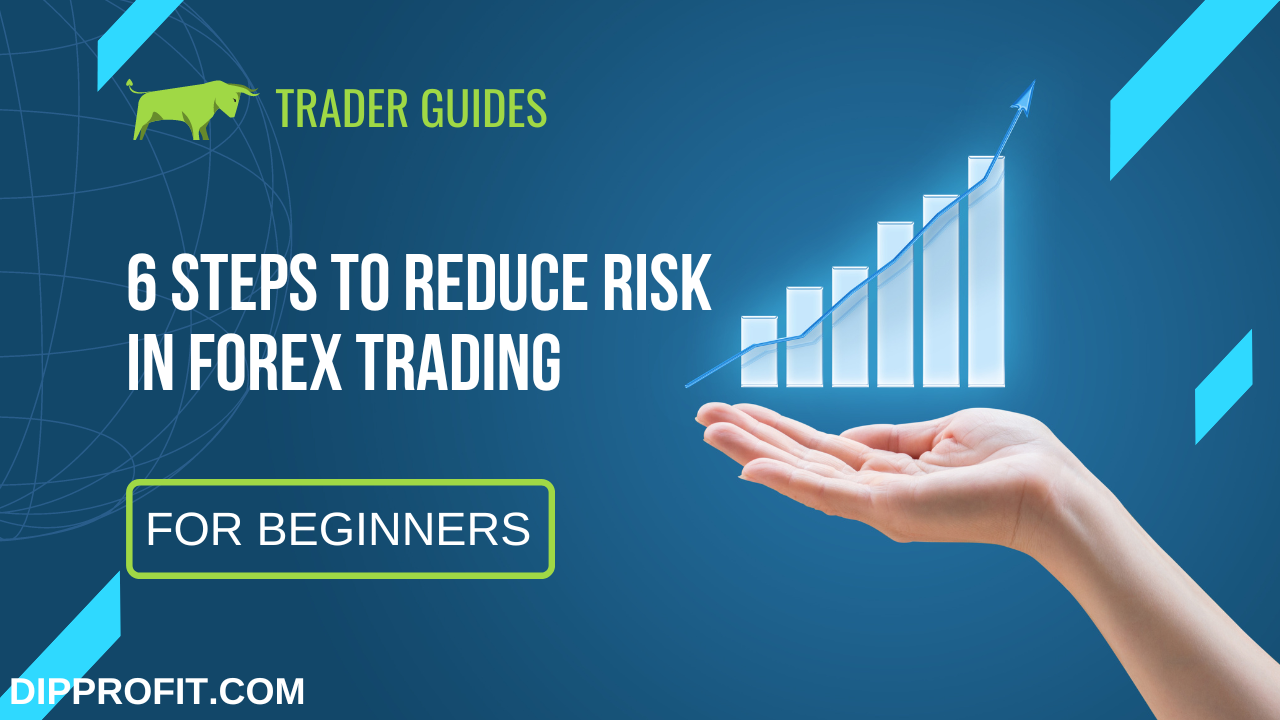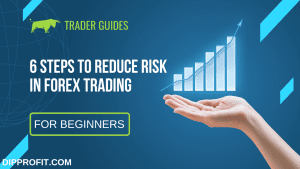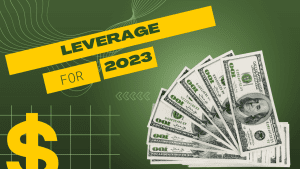How to Reduce Risk in Forex Trading
You would undoubtedly be interested if I told you that by following a few straightforward tactics as a Forex Trader, you could reduce your risk in forex trading. We are all aware that trading involves risk. Nothing you do will make that danger disappear. However, there are methods you may use to reduce the risk associated with each trade you make.
Simple Ways to Reduce Risk in Forex Trading
Many traders are often taken aback when they learn how simple it is to lower forex risk. Here are a few of the simplest yet most powerful actions you may start doing to reduce risk in forex trading.
Continue using lower leverages.
The promise of greater returns might persuade some traders to employ large leverage. However, large leverage also entails a significant increase in risk. You stand to lose much more if the pricing turns out to be against you. Due to trading with extremely high leverage, a trader has frequently lost all of their equity.
When placing your stop loss and take profit orders, use caution. This is a serious matter, and you should not take it lightly. Simply by placing your stop losses and take profits in the right places, you may greatly reduce the risk in Forex trading. You must carefully analyze your charts and correctly interpret signals to be sure of this.
To reduce risk in Forex Trading, adhere to your trading strategy.
For successful Forex trading, it’s essential to maintain focus and discipline. They are particularly crucial if you want to reduce the risk associated with each deal you make.
You will resist the desire to trade impulsively if you can maintain concentration on your trading strategy. The riskiest thing you can do as a Forex trader is probably acting with this level of irresponsibility.
Trade using Longer Time-frames
Another way to reduce risk in Forex Trading is by trading Longer Timeframes. Short-time frame volatility is relatively high, which equates to increased risk. Additionally, short-term trades have greater costs.
As a result, the net profit is much lower. Longer-term trades are more reliable. Due to the decreased risk and higher reward, they are more profitable. Additionally less stressful are long-term transactions. Additionally, they allow you more time to carefully plan your deals.
Avoid trading when there are significant economic shifts.
The currency market may be significantly impacted by changes in the global financial environment. During periods of economic unrest, market action will be particularly challenging to forecast.
For this reason, it’s crucial to follow the latest in economic news. The performance of your trading instruments can be influenced by central bank announcements, a decline in employment, and other such occurrences. Don’t make any deals during this period since it will be extremely dangerous. Simply remain still and for the commotion to pass before considering a deal.
Trade marketplaces that are unrelated
This approach upholds the idea that diversified investments reduce risk. Markets that are tied to one another tend to move together. You will only suffer losses if the market declines in that direction.
On the other side, trading uncorrelated markets will diversify your bets so that you never lose everything due to a single market swing. For example, if you are already in a EURUSD trade, it is advisable that if you are going to take a second trade it should have nothing to do with the EUR or the USD, so you can trade pairs like the NZDJPY, etc.
A Decent Risk – Reward Ratio
As you should know by now that Forex Trading involves lots of risks, as well as offers great rewards. The fact of the matter is that, as a trader, you should understand that both Risk and Rewards go together in Forex trading and there is no way to separate one from the other.
Due to this, professional traders oftentimes make provisions for both the trade risk, which means the percentage of their capital they are willing to risk, and the percentage profit they are looking to gain from the market.
This basically helps the trader achieve the trading goals easily, as they already have an idea of what can happen in the trade, it’s either they lost the amount of money they have set aside as the risk or gain the amount of money they have projected as the trade profits.
The most advisable risk-to-rewards ratios is 1:2 and 1:3, in which, 1 is the risk ratio while 2 or 3 is the reward expectation.
What this means is that if the trader is willing to risk 5% of their trade capital then using the 1:2 plan, the reward expectation is going to be 10% which is 2 times what the trader is willing to risk or lose to the market.
Using the 1:3 ratio plan the trader’s reward expectation is 15% which is then 3 times what the trader is willing to risk. This is a very good trading plan, it helps the trader manage and greatly reduce losses in their trades.
Conclusion
There are other things you can do in addition to these to reduce risk while trading FX. Just be sure to maintain your eyes on the end objective at all times, regardless of the actions you take.
There will always be risks in Forex trading. If you still trip up in spite of your measures, just consider the mistake as a lesson. Consider it a lesson you may use to further lower your risks going forward.
Dipprofit is a platform where we provide you with the latest news, events, and insights on Cryptocurrency, and Forex trading we also give quality educational content to our readers. Click the bell icon on the article page to subscribe and get first-hand updates that would also help your Crypto, Forex Trading & financial journey.




